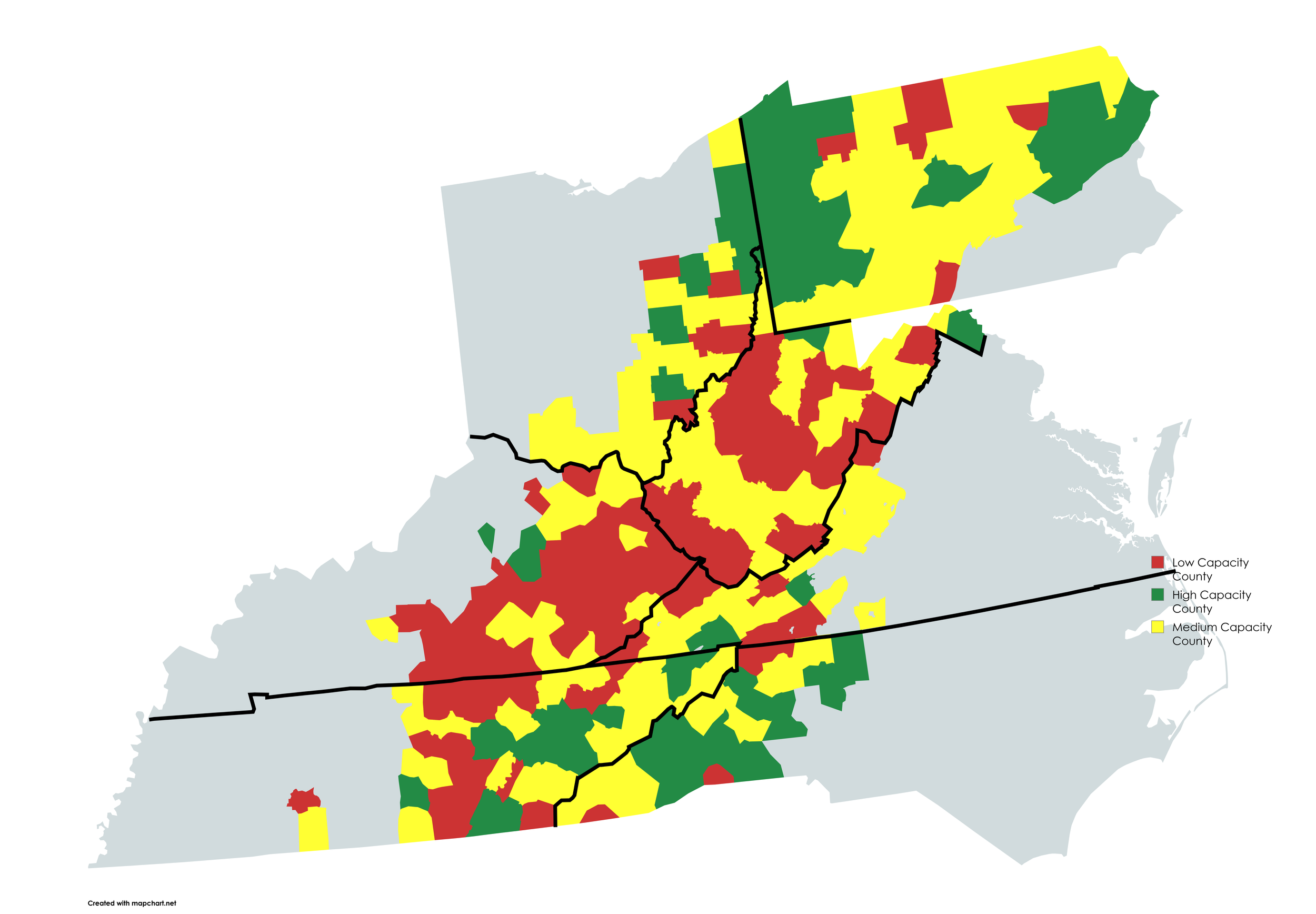
State & local officials are in need of greater support from the federal government.
Local governments are intended to be the first responders when disasters strike, however, many small towns in Appalachia lack the capacity to handle these devastating events. State and federal governments may offer a tremendous amount of help but even accessing and coordinating these resources is challenging for local governments. Federal funds often require local matching dollars and human resource capacity to implement and administer them that can often be lacking in rural communities.
“Floods are ‘acts of God,' but flood losses are largely acts of man."
-Gilbert White, Environmental Geographer
Rural Capacity Index - Headwater Economics
The Rural Capacity Index (RCI) measures the capacity - in terms of staffing levels, resources, and community expertise - to manage complex grant processes and plans for maintaining infrastructure improvements.
RCI scores range from 0 (low capacity) to 100 (high capacity). Kentucky and West Virginia rank highest among states within Appalachia for low-capacity scores, while North Carolina, Ohio, and Pennsylvania have comparatively higher rural capacity.
Combined, 62% of Appalachian counties in Kentucky and West Virginia are considered low-capacity and only 6% are considered high-capacity.
For North Carolina, Ohio, and Pennsylvania, however, 36% of Appalachian counties are considered high-capacity and only 12% are considered low-capacity.
Many Appalachian communities listed here have fewer financial resources because of the coal industry’s decline, which has negatively impacted tax revenues across the region.
Our Recommendations
If FEMA Public Assistance money were structured differently for disadvantaged communities, necessary support could be better provided to these communities. Eliminating or reducing local match requirements, increasing funding for programs like Flood Mitigation Assistance (FMA) and Building Resilient Infrastructure and Communities (BRIC), and creating new programs to increase local training and proactive mitigation activities would increase local capacity to coordinate in the wake of flood disasters and to collaborate on long-term flood resiliency.

